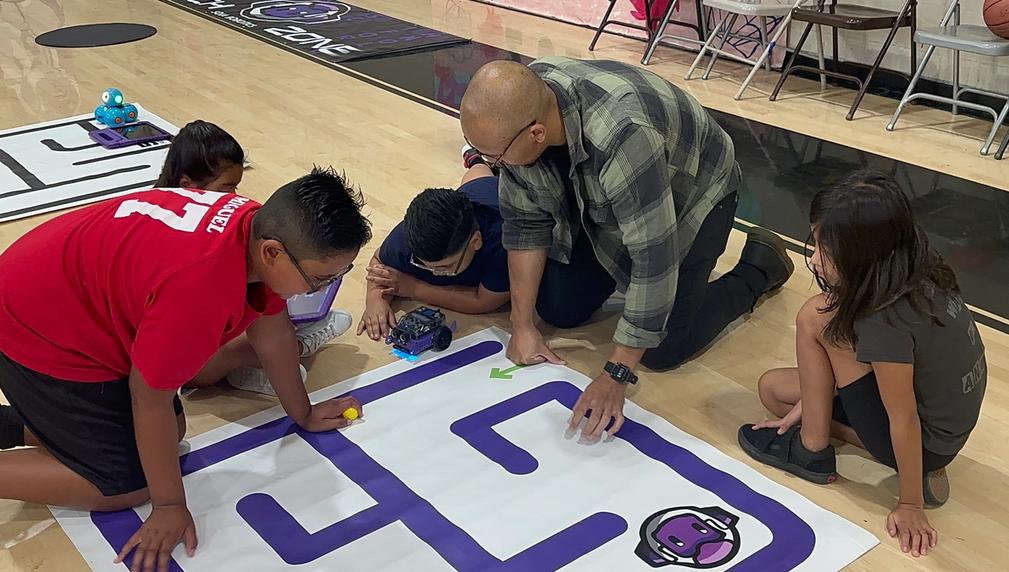Intergenerational STEM Engagement in Parks
Parks and Recreation centers are an important community asset that provides a place for residents of all ages to connect with one another. The LA STEM Collective, composed of more than 70 STEM organizations from across Greater Los Angeles, is collaborating to increase access to innovative and engaging STEM programming at local city parks to create opportunities for intergenerational community members to gather, learn, and connect.

What is the primary issue area that your application will impact?
Social support networks
In what stage of innovation is this project, program, or initiative?
Pilot or new project, program, or initiative (testing or implementing a new idea)
What is your understanding of the issue that you are seeking to address?
Los Angeles has many STEM education resources, yet historic and on-going inequities have limited access to these opportunities for many. There is a need for safe, accessible places within the community to access high-quality, engaging STEM programs that foster meaningful interactions between residents. STEM programs not only help learners develop critical thinking, problem-solving, and creativity skills, but also provide opportunities for social and emotional learning by allowing learners to engage with real-world problems and collaborate to find solutions. Community STEM programs that bring together students, families, and their communities can support the development of STEM identities (National Academies of Sciences, Engineering, and Medicine, Science and Engineering in Preschool Through Elementary Grades: The Brilliance of Children and the Strengths of Educators (2021)). There is a need for opportunities for the community to connect with each other and local STEM resources.
Describe the project, program, or initiative this grant will support to address the issue.
The LA STEM Collective is partnering with the City of LA Department of Recreation and Parks to bring intergenerational STEM programming to sites located in communities identified by Rec and Park leadership as highest need. LA STEM will work with park site coordinators to learn about their communities and interests. We will then plan a series of weekend STEM programs at each site, returning three to four times over a period of several months to engage visitors in a variety of programs.
Because LA STEM includes over 70 member organizations, we are able to provide a diversity of unique, enriching experiences, with topics ranging from marine organisms to urban ecosystems, and engineering challenges. By offering the programs as drop-in stations of one to four organizations, we hope to reach a unique audience that perhaps otherwise would not have sought out STEM programs on their own. Potential audiences could be family who have come along for a sports game, or a senior community member who regularly passes by the site and are drawn in by the programs available. These programs have the potential to spark interest, personal connections, and conversation around relevant STEM topics that connect all community members in the city. By providing programming over a series of months, we hope to build reciprocal relationships with the Rec and Park sites and within the community to foster a sense of belonging and connectedness to their local park and STEM assets of their city.
Describe how Los Angeles County will be different if your work is successful.
We will ensure that programs address community interests by working with Rec and Parks staff to identify five to ten key sites and their unique program needs. Through a series of three to four weekend programs, participants will be engaged and excited to dive deeper into STEM, and connect with each other through shared experiences. Events will see greater attendance over subsequent dates as participants return for advertised programs and share about it within their community.
If this initiative is successful, we hope to continue programming at each site and add additional sites so that STEM can continue to be an opportunity for communities to connect and learn about the world around them. As this work continues, success will look like communities throughout LA that are engaged with one another while exploring STEM, which leads to fostering intergenerational STEM belonging. This will have expansive impacts by bringing more awareness for STEM careers and opportunities into the community.
What evidence do you have that this project, program, or initiative is or will be successful, and how will you define and measure success?
We will define and measure success around three key goals. Our first goal is to reach communities to provide quality STEM programs that foster opportunities for intergenerational learning and connection. We will measure success for these goals through a count of the number of engagements at each event, as well as observational data from educators about their interactions with the audience. Our second goal is to build awareness about the LA STEM Collective and the member organizations as STEM resources for the city. We will measure success by the distribution of information regarding the LA STEM Collective and STEM resources, including a STEM enrichment hub that the community can use to find local STEM resources.
Our third goal is to build partnerships with sites to build quality programs that meet the needs of each community. We will collaborate with Rec and Parks leaders to evaluate the success of the programs, share audience feedback, and iterate on the program model.
Approximately how many people will be impacted by this project, program, or initiative?
Direct Impact: 1,000.0
Indirect Impact: 50,000.0